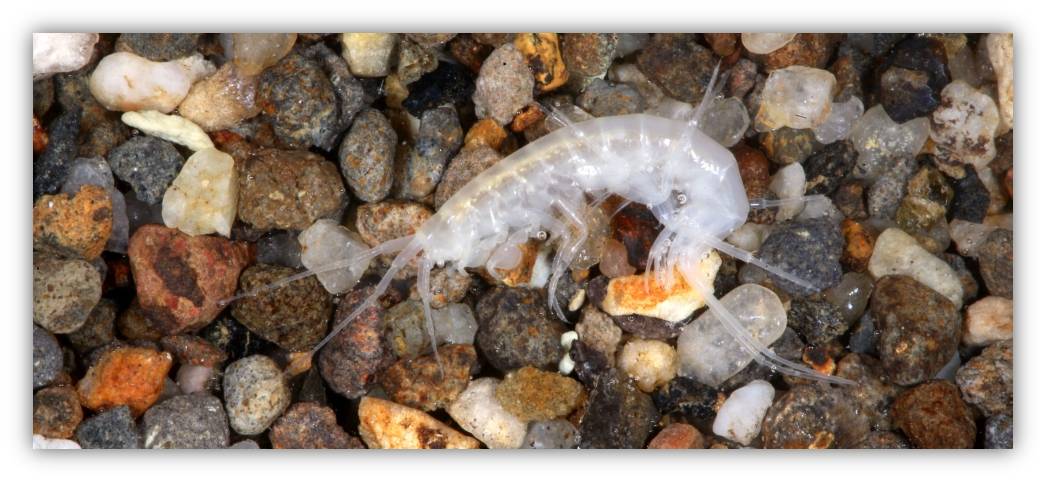
Cave Amphipods
Cave amphipods of the genus Niphargus are blind, colorless and are spending almost their entire life in complete darkness. Up to date, 20 different species of cave amphipods are known from Germany. Science hasn't yet succeeded to separate the many different variants of cave amphipods on both, a morphological and genetic base. The most common species in springs are Niphargus aquilex, Niphargus schellenbergi and Niphargus puteanus.
As a true inhabitant of the ground water, cave amphipods are moving temporarily into springs to search for food. They are feeding on tiny plant particles and tiny animals. Cave amphipods posess an excellent sense of touch and smell. They are lying on their side while moving. The German Speleological Society has chosen Niphargus as the Cave Animal of the Year 2009.
In the springs of the Rhön mountains, Niphargus schellenbergi (Schellenberg's groundwater amphipod) is commonly found. It grows up to 1.5 cm in size. The main threat to this species is the capture and canalization of springs. Groundwater amphipods are known to leave the ground waters at night to feed in the springs, and return to the shelter of the ground water during the day. The installation of pipes blocks the retreat into the ground water. Due to their sensitivity to light, and their lack of adaptation to the predature pressure of the surface habitat, ground water amphipods do not survive on the surface for more than a few days.


